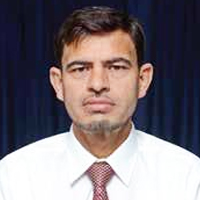Impact of alloimmunization on transfusion-dependent patients
Published on: 16th November, 2017
OCLC Number/Unique Identifier: 7286352883
Red blood cell (RBC) alloimmunization can be a life-threatening complication for patients with thalassemia major and sickle cell disease (SCD) who must receive chronic therapeutic transfusions. Chronic transfusions can lead to erythrocyte alloimmunization, patients continue to develop alloantibodies due to the transference of the immunogenic antigens on the donor RBCs. Many complications are possible. Difficulty in finding compatible match units for the patients can cause transfusion delays delayed, or present alternative risks to the patients from delayed hemolytic transfusion reactions. This review discusses the possible mechanisms, risk factors associated with alloimmunization formation and the hemolytic transfusion reactions and also describe the guideline for transfusion management of these patients, including opportunities and emerging approaches for minimizing this life-threatening complication.
The pattern of blood pressure and renal function among children with Sickle Cell Anaemia presenting in a tertiary health institution in Nigeria
Published on: 16th April, 2019
OCLC Number/Unique Identifier: 8163611724
Background: In sickle cell anemia (SCA), compromise of the renal vasculature due to sickled red cells has been recognized.
Objectives: To assess the renal function and blood pressure pattern in children with sickle cell anaemia (SCA) presenting in a tertiary institution.
Method: A cross-sectional study of patients with sickle cell anaemia (SCA) over six months involving the use of questionnaires, general physical examination, blood pressure, investigations for haemoglobin genotype, urinalysis, serum creatinine, screening for hepatitis B and HIV.
Results: 51 children with SCA were seen. The prevalence of impaired renal function as defined by reduced eGFR <90mL/min/1.73m2 in this study was 27.5%, previous hospital admission and blood transfusion were associated with reduction in eGFR but blood pressure did not have significant correlation with the eGFR. The overall mean age at diagnosis of SCA was 4.09 ± 3.33 (years).
Conclusion: Impaired renal function is a major comorbid condition in children with SCA. In countries/locations where there is no newborn screening for sickle cell disease, diagnosis is delayed, thus detecting impaired renal function may be delayed, therefore the need for early detection and management is imperative.Introduction
Glomerular hyperfiltration in Yemeni children with sickle cell disease
Published on: 12th January, 2021
OCLC Number/Unique Identifier: 8899350598
Background: Glomerular hyperfiltration (GH) is a common feature of sickle cell nephropathy (SCN) starting at infancy and represents an early marker of incipient glomerular injury and renal dysfunction.
Methods: This study aimed to determine the prevalence and correlates of GH among children (≤ 16 years) with sickle cell disease (SCD) at their steady state, recruited over 6 months at the Pediatric Outpatient Clinic in Al-Sadaqa General Teaching Hospital, Aden, Yemen. Glomerular filtration rate (eGFR) was estimated using the Schwartz formula. Data on clinical history, anthropometry, blood pressure (BP) and laboratory investigations were collected.
Results: Of 101 children (mean age 7.2 ± 3.9 years), 65 (64.4%) were males. The prevalence of GH was observed in 36 (35.6%) children, who were significantly older (10.7 ± 3.2 vs. 5.2 ± 2.7 years, p < 0.001) and had a lower fetal Hb level (5 ± 3.3 vs. 9 ± 7.1, p = 0.02). All children were normotensive, but hyperfiltrating children showed significantly higher systolic (97.2 ± 7.3 vs. 89.7 ± 5.2 mmHg) and diastolic pressure (55.1 ± 5.0 vs. 49 ± 4.3 mmHg) (all p < 0.001). Among evaluated children, 25.7% had hyperfiltration alone, whereas 9.9% had an associated microalbuminuria (MA), and no significant difference in eGFR between those with and without MA (158.4 ± 33.7 vs. 160.7 ± 29.8 ml/min/173m2, p = 0.84).
Conclusion: This study demonstrated a relatively high prevalence of GH in Yemeni children with SCD that increased with age. Recognition of hyperfiltration and other early markers of nephropathy in this population could help to develop renal protective strategies to prevent progressive loss of kidney function.
Using the DFConhecimento instrument to assess Congolese healthcare professionals’ knowledge on sickle cell disease
Published on: 29th September, 2021
OCLC Number/Unique Identifier: 9278289343
Introduction: Despite advances in the management of sickle cell disease (SCD), gaps still exist in the knowledge of healthcare professionals (HCPs) about the disease. The objective of this study was to assess the knowledge of HCPs about SCD.
Methods: This is a cross-sectional study involving 465 HCPs (physicians and nurses) who responded to the DFConhecimento instrument questionnaire. Performance was tested in terms of average score and proportion of correct response for each questionnaire item topic.
Results: The average score for respondents was 4.6 ± 1.9 out of a total of 13 points. Proportions of professionals who responded well were greater than 58% in three topics (Neonatal screening program, Sickle cell conditions, and Sickle cell anemia genotype). In the other topics, rates of good response ranged from 11.6% to 46.0%. There was a statistical association between best performance and medical title: physicians were more knowledgeable than nurses (OR = 6.26; 95% CI: 2.69-14.56).
Conclusion: This study highlighted that knowledge of SCD among HCPs is very inadequate. This lack of sufficient information on SCD from HCPs indicates the need to develop continuing education programs.
Macitentan in Adults with Sickle Cell Disease and Pulmonary Hypertension: A Proof-of-Concept Study
Published on: 22nd April, 2024
Pulmonary hypertension (PH) in sickle cell disease (SCD) is associated with a mortality rate of 37%. There is an upregulation of adhesion molecules which leads to the expression of endothelin-1, a potent vasoconstrictor. A prospective, descriptive study was done to determine the safety and efficacy of macitentan in patients with SCD and PH. Continuous variables were reported as mean ± SEM or percentage where appropriate. We screened 13 patients and recruited five. All five patients were adults. Data were analyzed as appropriate by student t - test. Statistical significance was assumed at p < 0.05. Baseline pulmonary hemodynamics obtained by right heart catheterization and systemic hemodynamics were (± SEM): mean pulmonary artery pressure (MPAP) 32 ± 8 mmHg, right atrial pressure (RAP) 9 ± 4 mmHg, pulmonary vascular resistance (PVR) 257 dynes-sec/cm5 and CI 3·7 ± 0.39 l/m2. Of all parameters, only PVR and 6-min walk distance changed significantly. For the group, MPAP decreased by 15.6%, PVR by 22.5% and RAP by 25.5%. The 6-minute walk distance increased over sixteen weeks except in Patient 4 who had a 3% decrease. The mean walk distance increased in the total distance, from 464 ± 158 meters to 477 ± 190 meters (p .123). In four patients, the adverse events were mild to moderate and did not lead to study drug discontinuation. Significant improvement in pulmonary hemodynamics and exercise capacity in patients with SCD-related pulmonary arterial hypertension. We found that macitentan was safe and well tolerated.
Clinical Severity of Sickle Cell Anaemia in Children in the Gambia: A Cross-Sectional Study
Published on: 8th January, 2025
Background: Sickle cell anaemia (SCA) in children demonstrates a broad range of clinical manifestations and serious complications. Assessment of disease severity in specific populations is necessary to plan services and optimise care. Aim: To describe the clinical severity of SCA and associated sociodemographic and clinical factors in children in Gambia.Methods: The presence of lifetime complications was confirmed by history and review of medical charts. We determined clinical severity using a validated scoring system and related the severity to sociodemographic and clinical factors.Results: In 130 study participants, ages ranged from 5 to 15 years with a mean (SD) age of 9.74 (2.81) years. Eleven (8.5%) children had had acute chest syndrome, 7 (5.4%) avascular necrosis of the femoral head, 6 (4.6%) gallstones, 5 (3.8%) stroke and 1 (0.8%) priapism over their lifetime. Disease severity was classified as mild in 108 (83.1%) children, moderate in 17 (13.1%) and severe in 5 (3.8%). Age, age at diagnosis, sex, ethnicity, social class, and treatment with hydroxyurea was not significantly correlated with SCA clinical severity (P values 0.10-0.84).Conclusion: The high proportion of children with mild disease may be due to the high prevalence of Senegalese β-haemoglobin haplotype in the Senegambia subregion. However, the presence of moderate or severe disease in almost 1 in 5 children calls for concerted efforts in SCD care in this region.
















